
Hunting is a heckuva lot of fun, and the results — savory game meat, unique memories, and new friendships — are worth their weight in bug spray and doe urine. But if you’re new to the sport of hunting, you may or may not have had a mentor to lead you into the right way of taking game animals, which includes shooting them humanely.



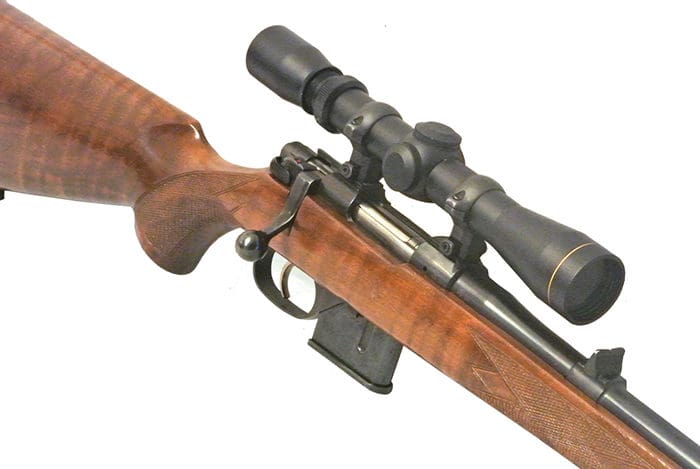
Shooting an animal, whether it’s small game such as rabbits and squirrels or medium to big game such as turkeys, javelina, whitetail, and mule deer, pronghorn sheep, and others, is an awesome responsibility. The task — killing something — carries with it an ethical responsibility to accomplish the harvest humanely, without undue suffering by the animal. That means you need to pick the right tool for the job…something you can handle and something that will kill the game animal with one shot.
So you and your new hunting rifle have to be able to deliver on that goal of a one-shot kill. If you have never bought a firearm or been in a gun store, then picking and purchasing your first hunting rifle can be a challenge.
No one wants to look stupid and everyone wants to spend their money wisely. Here are three tips that will help you find that first rifle you’re looking for to use while hunting North America’s game animals.
1. Do Some Research
There is lots of info on the internet, but most of it isn’t as good as what you see here at The Truth About Guns, so don’t believe everything you read. Stick with trusted online resources like TTAG, or go old school and actually buy a book on hunting.
Three guys who I know and trust to talk about hunting rifles include David E. Petzal, Bob Robb, and Bryce Towsley.
Petzal, former executive editor of Field & Stream and a longtime rifle columnist, wrote The Complete Book of Hunting, still available online in its original hardcover form, back in 1990. It’s a comprehensive look at hunting with a gun, covers gun and equipment selection, game species, and big-game hunting techniques.
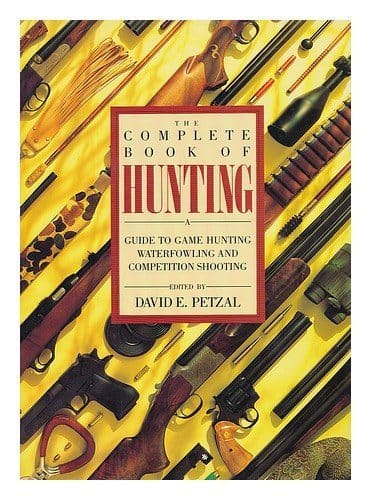
Robb is probably better known as a bowhunter, but he has taken plenty of game with a rifle. His Ultimate Guide to Elk Hunting is a paperback dating back to 2001 and covers the techniques and strategies of several North American elk hunters. Their advice covers hunting elk throughout their range and offers guidance on choosing the top-end of centerfire-rifle performance. Robb also authored the paperback, Hunting Wild Boar in California 6th Updated Edition if feral hogs are on your hunting season dance card.
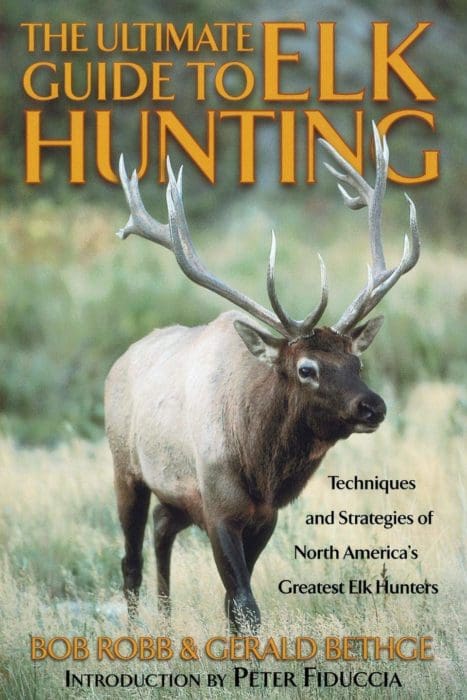
Bryce Towsley has written about firearms for 38 years. He knows guns and ballistics and how they relate to the real world, and currently writes a column on gunsmithing for The American Rifleman. His books include Gunsmithing Modern Firearms: A Gun Guy’s Guide to Making Good Guns Even Better and Big Bucks The Benoit Way, which is about an Eastern hunting family and their success at hunting deer. His “Prepper Guns” hardcover is also worth reading, though not directly on the topic of hunting rifle choices.
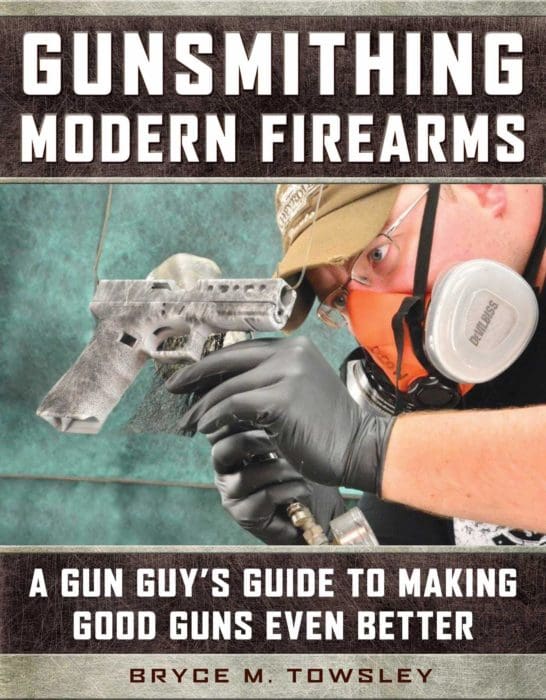
Of course, check with your friends and family about what they use, and why, and where they buy their hunting supplies. I would try to find a store that had a staff who hunts and who have experience in the type of game hunting I was considering.
Many states require new hunters (regardless of age) to take a state-approved hunter-education course. Go ahead and sign up for it. You’ll have to have the course eventually, and if you take it ahead of committing money to a rifle choice, you’ll gain valuable wisdom that can cement your pick before you start shopping.
Fortunately, reading about hunting isn’t as difficult as reading about particle physics, so doing a little research before you buy your first hunting rifle won’t be drudgery.
Most important…please take an NRA training course.
The gun-rights group is better known these days for its missteps in politics and the personal enrichment of its leadership. But the National Rifle Association got its start training shooters in firearms safety, and their First Steps Rifle Orientation should be a must-do item on your list.
Then, once you know how to handle firearms safely, sign up for the Basic Rifle Shooting Course. You’ll get a solid grounding in gun handling that will serve you well when you’ve decided to begin your search for a hunting rifle.

Also, if you attend the NRA Annual Meetings — when they’re held again — you can see the wares of nearly every major rifle manufacturer, side by side, and factory reps are there to answer questions. They also won’t try to sell you a gun at the show because they can’t. It’s a really low-key experience and a chance to look at a lot of guns side by side.
2. Take a Test Drive
The research you’ve done will narrow the field of choices you might consider, and it will also expose that you’re not just going to buy a rifle. It also means buying ammo, probably an optic (such as a riflescope or red dot), carrying case or sleeve or both, eye and ear protection, and cleaning supplies, at a minimum.
When new shooters ask me what I shoot, I’m careful to say that what I shoot isn’t necessarily what they need. But I do offer to take them to shoot whatever I have in my safe, my treat.
Most hunters I know are happy to take a new shooter to the range and let them feel the shooting experience without any financial commitment. Good manners dictate that you offer to cover the range fees and ammo, or buy lunch afterward, but that’s between you and your contacts.
During the test drives, you’ll find out pretty quickly what you like and what you don’t like. More important, you’ll find out what you can handle, and what you can’t.
Overwhelmingly, new people I’ve introduced to shooting love shooting smallbore rimfires, and they’re most comfortable using bolt actions because the manual of arms is easy to understand. Also, finding a good rifle in a reasonable price range is fairly easy.
Among the deer-hunting cartridges, I’ve found new shooters have enthusiasm when they shoot rifles chambered in .22-250, .223 Rem., .243 Win., .257 Roberts, .260 Rem., 6.5 Creedmoor, and 6.5 Grendel.
Most new shooters get recoil fatigue when they enter the .270 Win. realm, but they can generally tolerate it, along with the .25-06 Rem., 280 Rem., .284 Win., .308 Win. and others like that, including 7mm-08 Rem. and 7×57 Mauser.
Magnum cartridges, starting with the .257 Weatherby Magnum, are generally too much for most people who are just starting out, and 7mm Remington Magnum, 300 Winchester Magnum, and above are too much for almost all beginning shooters.

It’s most important to find a gun that you enjoy shooting and carrying. So that means one that’s light enough to carry for several hours in the field, but not so light you’re punished by recoil at the buttstock every time you pull the trigger.
3. Some Universal Considerations
Without getting into your choice of chambering, there are a few universal concepts to keep in mind prior to plunking down your plastic.
It’s very difficult to get a good, correct fit from your rifle when you’re buying it at the gun store. Ideally, you should check this by shooting a loaner, but if you haven’t, head position is the most crucial element to get right.
If your head is in any position other than straight up and down, you’ll oscillate around your center of gravity when standing as your brain seeks to find its balance. That translates into wobble.
In the video below, author Ryan Cleckner talks about the topic in more detail.
If you crane your neck left, right, or forward to see the sights or eye relief on the scope, you’ll be unstable. Part of this head position on the stock is due to length of pull (LOP), that is, the distance between the trigger and the middle of the buttpad.
Too long a LOP and you’ll have trouble getting your hand to the trigger, and you’ll feel like you’re falling off the back end of the gun. Too short, and you’ll come forward onto the front part of the comb and get too close to the optic. However, if you’ll be wearing thick winter clothes, take that into account.
The right way to get the gun up is to have a natural head position and bring the gun to your face, not the other way around. If you can’t get the optics in line with your eye when you bring the gun up, the fit is wrong, and the shooting gods will punish you with inaccuracy and pain. Ask me how I know.
You can help your stock-fit experience by buying a stock that allows for some adjustability. The Ruger American Hunter short-action line comes with a Magpul stock that’s adjustable for LOP and comb height. Ruger’s Precision Rifle and Precision Rimfire Rifle come with adjustable buttstocks as well.
Mossberg offers partially adjustable stocks on some of its MVP and Patriot bolt-action rifles and the 464 lever actions. Savage offers stocks with adjustable LOPs, as does Browning in its X-Bolt lines. Some Remington Model 700s, especially the long-range models, have adjustable stocks.
The Weatherby Vanguard Synthetic Compact has LOP adjustability. You can also improve your marksmanship with many synthetic and wood stocks by adding adjustable combs or wraps.
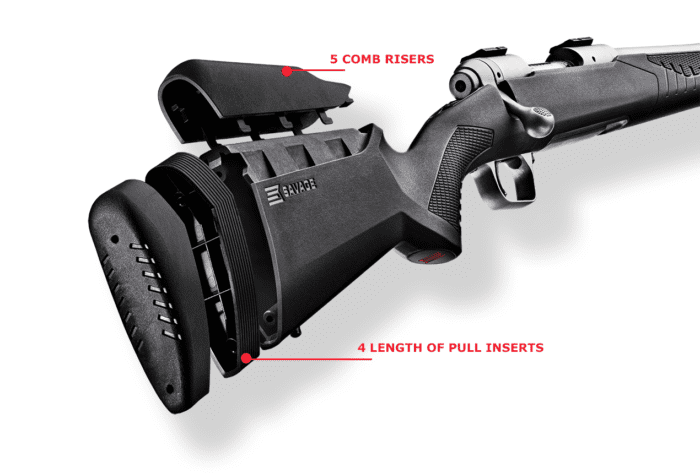
If you decide to go with a semi-automatic rifle that has a buffer tube on it, you can fit a whole bunch of multi-position adjustable stocks on it pretty easily.
You’ll have to decide on an action type, but some of that will be dictated by the chambering you choose. I prefer bolt actions for hunting, but you may be happy with a pump action, lever-action rifle, semi-automatic, and or single shot.
You’ll also have to choose a stock from a dizzying list of materials, including hardwood, laminated wood, polymer, and fiberglass. I like the looks of wood, but synthetics are more durable and more resistant to the elements. An effective recoil pad is also worth looking for.
Beyond chambering, your choice of barrel includes materials (carbon steel or stainless), length (generally 16 to 26 inches), contour (thickness), and muzzle treatment (threaded or not threaded for an appliance).
A longer barrel will certainly affect the rig’s overall length and weight, but they aren’t inherently more accurate. It’s worth looking at this TTAG article, The Truth About Barrel Length, Muzzle Velocity and Accuracy, for more on the topic.
Bottom Line
It’s easy to be overwhelmed when picking your first hunting rifle. But if you use a process of elimination — action, chambering, stock style, and barrel style — you can quickly get your choices down to just a few inside your price point and make your final decision from that list.
Here are a few more topics that can help you choose the best hunting rifle for small or large game:
Hunting 101: Getting Started with Hunting in America
Hunting at Maximum Point Blank Range (MPBR)
Gun Review: Savage Model 110 Varmint in .223 Remington
My Lost (and Found) Remington 700 .260
Gun Review: Tikka T3 Hunter
Gun Review: Mossberg MVP LR-T
My Name Is Tom And I’m A Hunter
First Time Hunter: My First Kills
5 Hunting Rifles That Won’t Break The Bank
6 Under-The-Radar Hunting Rifles That Are Worth Buying
Gear Review: Leupold VX-Freedom 1.5-4×20 Duplex Reticle Scope




Most important: take an NRA training course? Lol
Good article. Covered the basics and then some. But, I guess times do change. When I was handed my first (insert firearm type here) I didn’t have the privilege of selecting make/model/caliber/gauge. It was what Grandpa, Dad, or an uncle had. When I think back on it, the latter was probably the greater privilege.
Ok, first thing is in my experience, few people just out of the blue decide to start hunting. Most likely they have been over to a hunters house and eaten game meat, had friends who spoke reverently of how they enjoy getting out and into the field, had relatives who hunted at some point in their life, or remember their grandfather, or father used to hunt.
However, they, themselves have never hunted, or may have never fired a gun. I know a couple people who grew up in a city, never hunted, but remember their grandfather telling tales of when he was a kid and hunted because the family needed to food. Or how Dad used to hunt before they moved to the city for work.
So, first thing is to decide on what, where and how you are going to hunt. the what and how may be an easy choice. Where can be a problem. Thick cover, broken or open pasture lands, farm fields, mountains and canyons, open praire.
Next is the what. Whitetail deer, Mule deer, Elk, squirrels, rabbits, Turkey or pheasant, Ducks, Hogs, etc.
Whatever you may choose to hunt, you will need to select a firearm you will be comfortable using and learning to use well. No point in blasting away but flinching or just slinging rounds downrange in the general direction of your prey. Use a firearm you will be able to control and practice with. Shooting is a learned skill and requires regular practice. Something you won’t do if you choose too much gun. Next part of the choice is type of firearm. Again, what will you be comfortable with. Of course some of that choice comes the with the price tag. Not everyone can afford to drop 2 grand on a Sako or Weatherby semi custom, fitted build. Nor should you just pick up the first cheap bang stick off the used rack at the pawn shop. If possible, hook up with someone who is a hunter and ask questions. And don’t be afraid to walk if you run into someone who does or suggests doing something you don’t think is ethical. If possible, try out several types, and calibers of firearms.
Last part of deciding what firearm to purchase, what type and caliber of firearm is capable of making a humane kill of whatever you are hunting. A lot of deer were harvested with the old 3030 carbines. But, unless you car precisely place your shot, I would not recomend it for bear, elk or feral hogs. Nor would it be appropriate for rabbits.
So, new to hunting? Welcome to the field and above all, enjoy what you are doing.
Seek out some basic training in hunter safety and basic marksmanship, seek out solid advise and information on the sport and the firearms available, and, please, learn the laws and rules of your state and hunt with the respect the game you wish to harvest deserves.
Nearly perfect response! I would add(as a fellow old guy)be sure you can handle walking,running or being out in freezing cold or blazing heat.
Oldman, nice response. A Remington 700 in 30-06 with decent glass should cover big game in North America’s hunting fields. An 870/1100 in 20/12 will handle most wing shooting. At least one quality .22 LR. With good glass. Everyone needs one. Even if they think they don’t. We’ll talk about handguns later.
And other rifles.
Something to consider that may not apply to everyone, however growing up in no-where Alaska, We kept to available caliber choices. Weird calibers were almost non existant, we had to stick to 30-06, 270, 30/30. 308 and surprisingly 264 win. 12 and 20 guage was also very popular. These calibers were able to be bought in most hardware stores. Hell, I remember bying 308 in a grocery store. Something to consider with the current status of ammo.
Wally1 beat me to it.
I strongly recommend that a person who is buying their first hunting rifle choose a popular caliber which usually means that you will be able to find/purchase ammunition virtually everywhere. (That often minimizes ammunition cost as well.)
If you are going to hunt small game, .22 LR is king.
If you are going to hunt medium game including white-tailed deer, .243 Winchester is outstanding.
If you are going to hunt large game and can tolerate significant recoil, .30-06 Springfield is a proven standard platform.
If you are in a state/region which does not allow “traditional” centerfire rifle calibers (such as the calibers above) and only allows “straight-walled” cartridges (which typically means “traditional” handgun calibers) for hunting medium or large game, I believe a rifle chambered in .44 Magnum is your best choice. Before the recent run on ammunition, you could almost always find at least one type of .44 Magnum ammunition at virtually every store that sells ammunition. And, with proper ammunition selection and within reasonable distances (perhaps 100 yards), .44 Magnum out of a rifle is very potent and likely capable of taking down any game animal in North America with the possible exception of polar bears.
Living throughout Alaska as a child, I have actually seen a polar bear in person, (Not in a zoo). They are HUGE! When I was an Alaskan adult, (At about 13 years old), I had a face to face encounter with a large brown bear on Seymour canal in southeast Alaska. I was alone and armed with a single shot 20 guage. It was pucker time. There is a reason why your bung hole is water tight. The bear ran, in a moment, I knew there was a god. I now live in the lower 48 (states) but when I visit my brother who still lives in Alaska for a hunt, (he can act as my guide), I bring one rifle, my custom short barrel and ported stainless paddle stock Ruger 338 win mag. I agree a 44 mag lever gun would be good, maybe a lever 45-70 better.
Wally1,
When you are talking about territory where brown bears exceed 800 pounds, you need all the gun you can get. If I were hunting brown bears, I would want a rifle in .338 or larger centerfire rifle caliber. Within 100 yards or so, a modern rifle in .45-70 Government (which can withstand modern high-pressure loads) will certainly do the job as well.
With respect to stopping a large charging brown bear, my go-to rifle would be a lever-action in .45-70 Government as you stated. In a handgun platform for repelling charging brown bears, I would go with a large (54+ ounces, 6-inch barrel) .44 Magnum revolver and full-power loads pushing 300+ grain hardcast bullets. Disclaimer: I readily admit that a larger caliber revolver would have a higher probability of stopping charging brown bears. I would not use said larger caliber revolvers because recoil becomes untenable in my case. If you can handle a revolver chambered in .454 Casull or .475 Linebaugh, by all means carry that instead of .44 Magnum.
Don’t forget to get a copy of the state hunting regulations & find out what’s legal.
A lot of states are shotgun-only, or restrict the rifle calibers that can be used (sometimes in strange ways).
Publius’ comment dovetails nicely with OldmaninAL’s comment,
“So, first thing is to decide on what, where and how you are going to hunt.”
As Publius stated, your state may not allow many calibers and/or firearm platforms which narrows down your field of choices. That can be somewhat of a benefit to first-time hunters.
Having said all that, just realize that there is no single caliber nor platform that is optimum for everything. And that is why you should decide what you want to hunt and where you are going to hunt. Your answers to those two questions will point you in the “right direction” in terms of your first hunting rifle.
My decision process for purchasing my first hunting rifle:
What was I likely to hunt?
White-tailed deer for sure. And I wanted the option to hunt antelope, mule deer, elk, and black bears. I was not planning to hunt moose nor brown bear.
Where was I likely to hunt?
In dense woods with shots as close as 25 yards and open terrain with shots as far as 350 yards–where “traditional” centerfire rifle calibers are legal.
The answers to those questions along with my desire to buy a popular caliber (to maximize my chances of finding ammunition at every store and to minimize ammunition prices) directed me to a rifle in .270 Winchester. And my extremely limited budget narrowed the field down to an inexpensive bolt-action rifle from a well-known quality firearm manufacturer.
Note that a rifle chambered in .308 Winchester would be an excellent choice as well (and arguably a better choice than .270 Winchester) for my intended applications which I listed above. What I did not mention in my intended applications was the ability to reach out to 800 yards in a SHTF situation where .270 Winchester is superior to .308 Winchester. That is why I chose .270 Winchester over .308 Winchester. Having said that, I did not realize several years ago when I purchased that rifle that budget-friendly rifles are usually not suited to accurate/repeatable shots beyond 300 yards or so. Thus, there was probably no advantage to .270 over .308 in an inexpensive rifle.
WTF! Over? Some of you guys have to put with some strange cartridge restrictions. I mean I could unlimber my .375 and shoot a whitetail with it tomorrow, it’s legal, but why would I? Maybe what makes sense has to be spelled out to some.
Gadsden Flag,
Some states are safety Nazis and do not trust hunters with “long range sniper rifles” in their “densely populated” states or large regions within their states. Thus, historically, they prohibited centerfire rifles for hunting and only allowed shotguns.
Fast forward several decades: the number of hunters are dwindling at an alarming rate and deer populations have been exploding. State conservation agencies decided that they could attract more hunters if they allowed centerfire rifles in chamberings which produced “modest” ranges. Such rifles would be more accurate, have longer ranges, and produce less recoil than shotguns. And yet these rifle chamberings would still protect their “dense” population areas.
As far as I can tell, state conservation agencies appear to have converged on the same standard on these “new-fangled” rifle calibers: “straight-walled” cartridges with a case length no greater than 1.8-inches. That typically means rifles chambered in .357 Magnum, .41 Magnum, .44 Magnum, .45 Colt, .454 Casull, and .450 Bushmaster. And we also have the late entry into the game, .350 Legend which is designed explicitly for the states with said limitation. Rifles chambered in those calibers have a maximum practical range of 100 to 200 yards depending on the exact loading and bullet weight.
The result in theory is that rifles chambered in some/all of those calibers:
1) Produce markedly less recoil than 12 gauge shotguns shooting slugs.
2) Are more accurate than many/most shotguns shooting slugs.
3) Have longer ranges than many/most shotguns shooting slugs.
In my experience the above list agrees with reality. And, true to state conservation agency intentions, youth hunters and women are going afield with the lighter recoiling calibers who would not otherwise go afield with 12 gauge shotguns (or even 20 gauge shotguns).
In the immortal words of Paul Harvey, “And now you know [long pause] the rest of the story.”
I highly recommend 450 Bushmaster for white tail where applicable. In those states that only allow straight walled cartridge rifles.
There are some States with caliber restrictions that you need to be aware of before plunking down your hard earned cash. In Colorado for instance, the minimum bullet diameter must be no less than 0.240″ for big game. So .243 and up is a requirement.
Personally, I’m a .300 Winchester Magnum fan. It’s appropriate for any large game in the North American Continent out past 1,000 yards. Yes, the recoil can be punishing, but even bolt action rifles can be threaded for muzzle brakes to help mitigate the recoil.
#1. Check with your State DNR as to what caliber is permitted for hunting game.
Big Game (Deer and larger) the State DNR will require a minimum caliber.
.22LR is generally acceptable for small game, even Coyote. (rabbit, squirrel, etc.)
Here in South Carolina, .223/5.56 is allowed for Deer but NOT recommended, DNR suggests .243 or larger.
This is really a very good article that I really like and will definitely share it widely with my friends, wish you all good health and make more articles in the future. thank
Despite all the above recommendations for choosing a hunting rifle for beginners, the main role here is played by desire, personal preferences and financial capabilities. However, you will find really good options here https://gritrsports.com/shooting/firearms/shotguns/
The article has extremely high-quality content, I appreciate it, your article will certainly bring a lot of useful knowledge to everyone. respect you
Guys maybe you can recommend me more portals with articles about guns, I do my research now, but found only this website!
I like that you pointed out how you need to pick the right tool for the job. I want to try hunting, so I am now trying to learn about what I need first. Besides the gun itself, I think I also need a hunting gun cover.
Comments are closed.